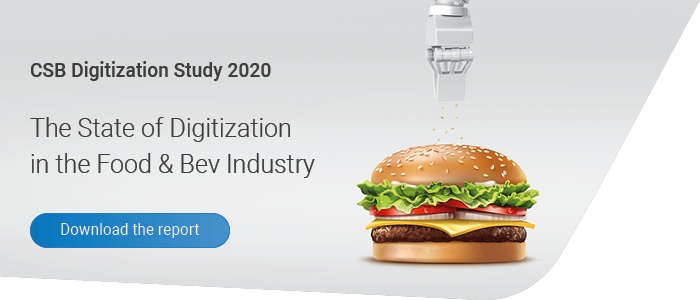Digitization has become mainstream - one thinks. But while large food companies are improving many processes with software tools and making them more cost-effective, the majority of small and medium-sized enterprises (SMEs) are hesitant. Although they are the ones who can benefit from the enormous potential.
The high level of divergence in terms of digitization at small and large enterprises is illustrated for example by the Bitkom Digital Office Index 2018. The companies interviewed were grouped on a scale from 0 to 100 points. 0 stands for “not digitized at all” and 100 for “fully digitized”. Businesses with more than 500 employees achieved an average of 63 points, whereas companies with less than 100 employees only achieved a mean of 53 points. This is not enough, according to many experts.
There are obstacles
One reason for the comparably low result of SMEs is surely that there are more questions than answers regarding the mega trend of digitization. What does the optimal IT infrastructure of SMEs look like? Which solutions do small enterprises really need, which are over sized or still dream of the future? Another obstruction is the much-feared high need for investment. Becoming smart costs money. What makes it even more complicated is the fact that larger digitization projects like the introduction of a complex ERP software require a lot of manpower.
Digitization of SMEs in practice
How digitization works out despite all the challenges, is demonstrated by the SMEs of the Regio FoodPlus Project, a joint project with partners from food production, IT, associations, scientific institutions and trading companies. The companies of Lienig Waldfrucht for example, or the Lobetaler Molkerei have already introduced essential digitization steps. The focus is always the ERP system used as digitization basis. The data exchange between the individual departments shall be improved, the production shall be controlled more efficiently and the collaboration with food retailers shall be expedited.
Recognizing their own customer as a driver to digitization
“I think the SMEs should focus on one question before starting their digitization activities,” says Ed Wood, CEO at CSB North America. “What do I want to achieve with my initiative?” Here you have to see it through your customers' eyes, as they are an important driving force of digitization. Food retailers expect their suppliers to use EDI, provide traceability data or guarantee quickest possible deliveries and a long shelf life of the items by using smart inventory management. Those who want to deliver directly to the consumers need an appealing online shop, which ideally can access the data in the ERP system. Only then, says Wood, comes the question of optimal equipment. In other words: Which software and hardware is available that is appropriate for SMEs and which not only is functional and safe, but also easy to handle and, what is more, affordable?
Concentrate on core competencies
The individual needs vary so much that it is hardly possible to give generally valid tips. In any case, the right set-up requires a balanced investment between infrastructure (server, networks, cloud services), devices (PCs, tablets, smartphones), industry applications and related services. Smaller businesses should therefore concentrate above all on their core competence and buy external IT services. For example, opt for hosting, and take advantage of IT for their company specific adjustments. However, what is almost more important is that you perfectly understand the processes in your own business so you can get way from offline and on to online.


